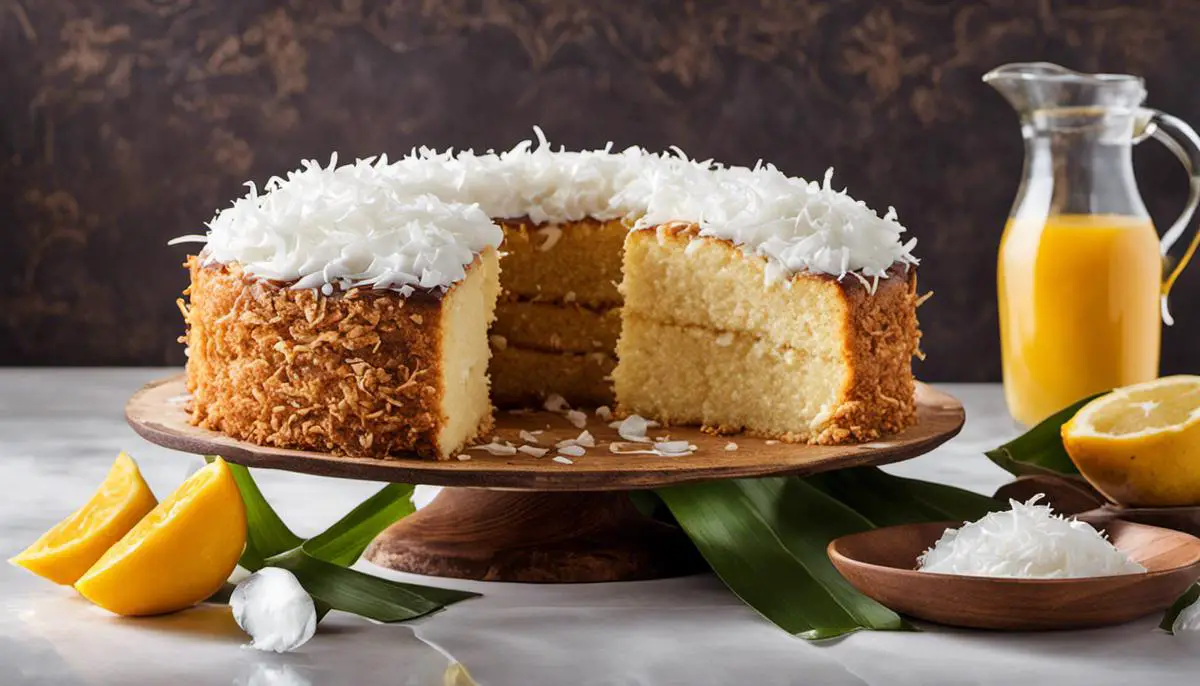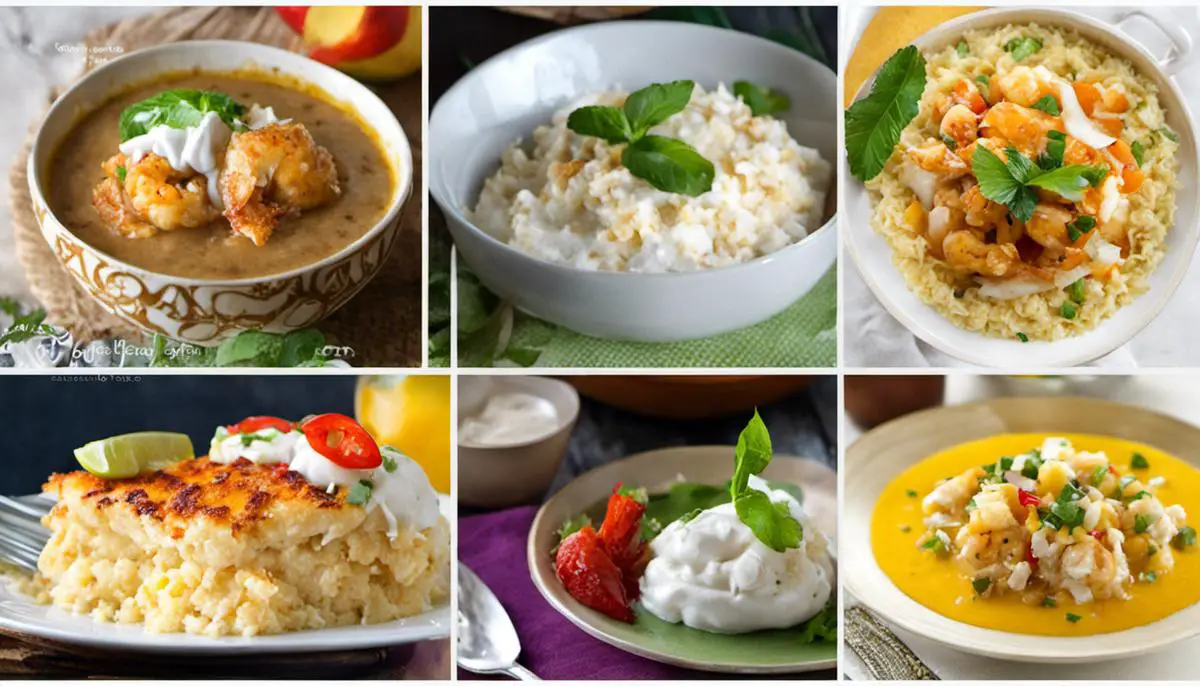Table of Contents
Coconut, the versatile tropical fruit, is not just about beautiful beaches and tall palm trees. It plays a central role in many culinary delights, offering a unique blend of flavors into every dish it graces. This fascinating trek into the world of coconuts serves as an exploration of its varying forms and uses, it’s diverse range in cuisines and the many health benefits it brims with. Whether you’re interested in knowing how to select the perfect coconut, creating simple coconut-infused treats or diving deep into complicated dishes from around the globe, you’re in for a tantalizing journey.
Understanding Coconut
Choosing the Right Coconut for Different Recipes
Choosing the right coconut for your recipe has a significant impact on the final result. For curries and other savory dishes, go for mature brown coconuts, which have a rich and robust flavor. For desserts like coconut cake or coconut cream pie, use the sweeter, lighter taste of younger green coconuts. Use only fresh coconuts with no cracks or dampness around the “eyes,” as those are signs of spoilage. Shake the coconut; if you hear liquid sloshing around, that’s a good indication of freshness.
Understanding the Nutritional Value and Health Benefits of Coconuts
Coconuts are high in dietary fiber, vitamin B6, iron, and minerals like magnesium, manganese, phosphorus, selenium, and zinc. They’re a great source of healthy fats, which can help lower bad cholesterol levels and increase good cholesterol. The fatty acids in coconuts can help boost brain function and speed up metabolism, too. Coconut water is high in electrolytes, making it a great natural rehydration drink.
Using Different Forms of Coconut in Cooking
Mature coconuts are versatile for both sweet and savory recipes. You can grate the coconut meat and use it to crust fried chicken, or sprinkle it over a bowl of oatmeal or granola. Coconut milk, made by blending coconut meat with water and straining it, is an essential ingredient in many Asian and Indian dishes like curry or soup.
Coconut cream is richer and thicker than coconut milk, making it perfect for desserts and creamy sauces. Coconut water, the clear liquid inside green coconuts, can be used in smoothies or as a base for cooking rice for some added flavor. Desiccated coconut, which is dried and grated, can be used as a topping for baked goods, mixed into batter, or used in recipes requiring a crunchy texture.
The different forms of coconut vary in flavor and texture, giving you diverse options for using this tropical fruit in your cooking. Understanding which type to use for certain recipes will help elevate your dishes.

Basic Coconut Recipes
Toasted Coconut
Toasting coconut enhances its taste, giving it a nutty and slightly caramel flavor. Begin by preheating your oven to 325 degrees Fahrenheit. Spread shredded coconut or coconut flakes in a thin layer on a baking sheet. Bake for 5-10 minutes, stirring occasionally to ensure even toasting. Pay careful attention as the coconut can easily burn. Once it is golden brown, remove from the oven and let it cool.
Coconut Milk From Scratch
To make coconut milk from scratch, you’ll first need to crack your coconut open. After draining the liquid, use a spoon to scrape the meat from the shell. Blend the meat along with 4 cups of warm water until the mixture becomes a thick, cloudy liquid. Next, strain this mixture through cheesecloth, squeezing to get as much liquid out as possible. Discard the remaining pulp. Freshly made coconut milk can be stored in the refrigerator for about four days.
Coconut Cookies
Preheat your oven to 350 deg F and prepare a baking sheet lined with parchment paper. Combine 1/2 cup of softened unsalted butter with 3/4 cup of sugar, beating until creamy. Add 1 egg and continue beating until the mixture is light and fluffy. Stir in 1 tsp of vanilla extract. Blend in 1 cup of all-purpose flour, 1/2 tsp of baking powder, 1/4 tsp of salt, and 1 1/2 cups of toasted coconut flakes. Drop dough by teaspoonfuls onto your prepared baking sheet, spacing the cookies about 1 inch apart. Bake for 8-10 minutes or until edges are golden brown. Let it cool before serving.
Coconut Rice
For coconut rice, rinse 1 cup of jasmine rice several times until the water runs clear. Drain well. In a saucepan, combine the rinsed rice, 14 oz of coconut milk, 1/2 cup of water, and 1/2 teaspoon of salt. Bring to boil over medium heat. Once it’s boiling, decrease the heat to a simmer, cover, and let it cook for 15-20 minutes or until the rice is tender. Remove from the heat and let it sit for about 5-10 minutes before fluffing it up with a fork and serving.
Coconut Smoothie
Combine a cup of coconut milk, two frozen bananas, a tablespoon of shredded coconut, and two dates for sweetness in a blender. Blend until it’s smooth and creamy. Optionally, you can add a scoop of protein powder for an extra boost. Try topping your smoothie with some additional shredded coconut or your favorite toppings. Pour it into a glass and enjoy your refreshing coconut smoothie.

Advanced Coconut Recipes
Dessert: Coconut Cream Pie
Start by preheating your oven to 350 degrees Fahrenheit. For the crust, combine 1 1/2 cups of shredded unsweetened coconut, 1/2 cup of melted unsweetened butter and 2 tbsp of sugar. Press this mixture into a pie dish and bake for about 10-15 minutes until golden. Allow it to cool. To prepare the filling, whisk together 3 egg yolks, 1/2 cup of sugar, 1/4 cup cornstarch and 1/4 tsp salt in a bowl. Simultaneously, in a saucepan, heat 2 cups of full-fat coconut milk until it simmers. Gradually add the coconut milk to the egg mixture, stirring continuously, then pour it all back into the saucepan. Cook this mixture over medium heat until it thickens, constantly stirring. Remove from heat, stir in 1 tsp vanilla extract and a pinch of coconut extract. Pour the filling into the cooled crust and refrigerate for a minimum of 3 hours. Top with freshly whipped cream and toasted coconut before serving.
Savory Dish: Thai Coconut Curry Chicken
Firstly, heat 1 tbsp of oil in a skillet over medium-high heat, add 1 lb of chicken and cook until brown. Remove the chicken and set aside. In the same skillet, add 1 diced onion and sauté until translucent. Add 2 tbsp Thai red curry paste and 1 tsp crushed garlic, stir to combine with the onions. Pour in one 13.5 oz can of coconut milk, stir until well mixed. Add the chicken back to the pan, cover and simmer for 20 minutes. Stir in 1 sliced red bell pepper, 2 shredded carrots and 1 cup frozen peas, cover and cook for 10 more minutes or until vegetables are tender. Serve this curry over steamed jasmine rice.
Beverage: Indian Coconut Lassi
This refreshing drink is simple to prepare. In a blender, combine 1 cup of unsweetened coconut milk, 1 cup of plain yogurt, 2 tsp of sugar, and ice cubes. Blend until smooth. For an extra touch of flavor, add a pinch of cardamom or cinnamon. Pour into glasses and garnish with a little shredded coconut.
Caribbean Meal: Coconut Shrimp with Mango Salsa
For the coconut shrimp, start by setting up your breading station: one bowl with 1/2 cup all-purpose flour, a second bowl with 2 beaten eggs, and a third bowl with 1 cup shredded coconut and 1 cup breadcrumbs mixed. Dip each shrimp in flour, then egg, then the coconut mixture. Deep-fry the shrimp in batches in hot oil until golden brown, and drain on paper towels. For the mango salsa, combine 1 diced mango, 1/2 a diced red onion, 1 diced jalapeno, the juice of 1 lime, and a handful of chopped cilantro in a bowl. Serve the crispy coconut shrimp with the fresh mango salsa on the side.

And thus, we delve into the richness that coconuts bring into our kitchens. By understanding the many forms coconuts can take, appreciating their nutritional advantages, and mastering the techniques to transform them into exciting recipes, we embrace a tropical bounty that dates back thousands of years. As we venture into simple and complex culinary creations – from homemade coconut milk to luscious Thai or Caribbean feasts – we enrich our food experience. This food adventure urges us to keep experimenting, keep tasting, and keep discovering the magic that coconuts can offer.
